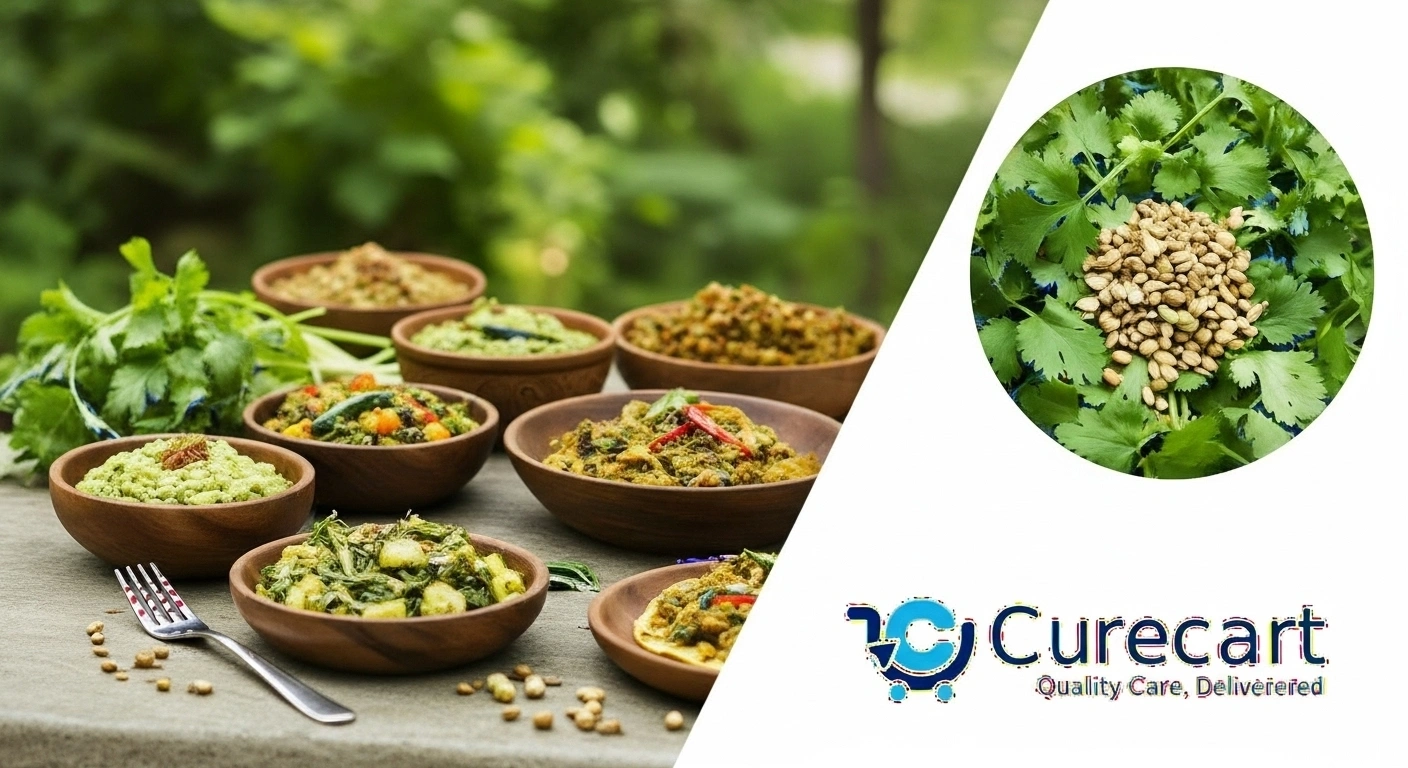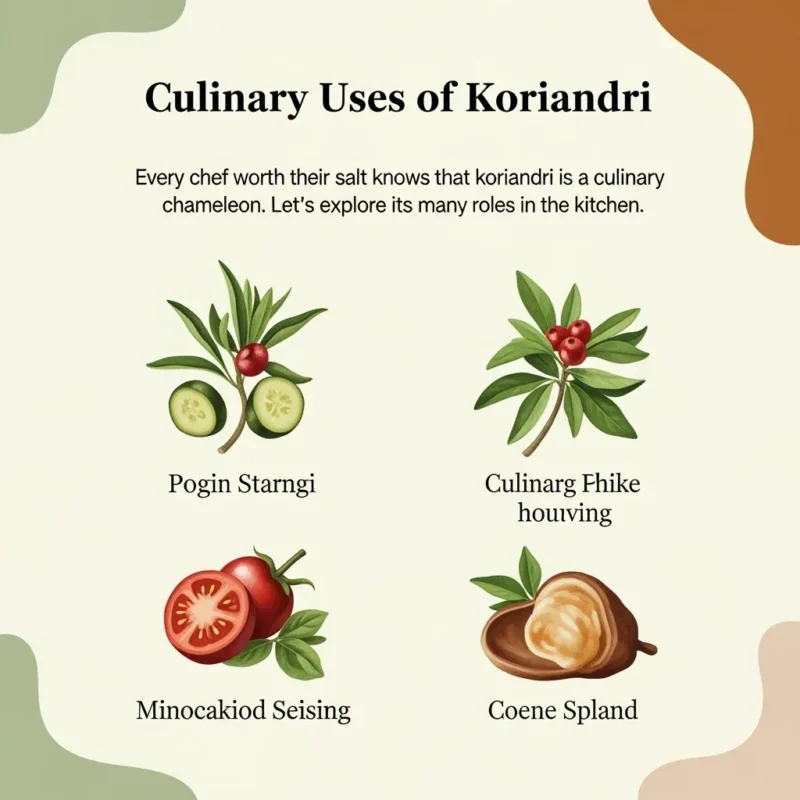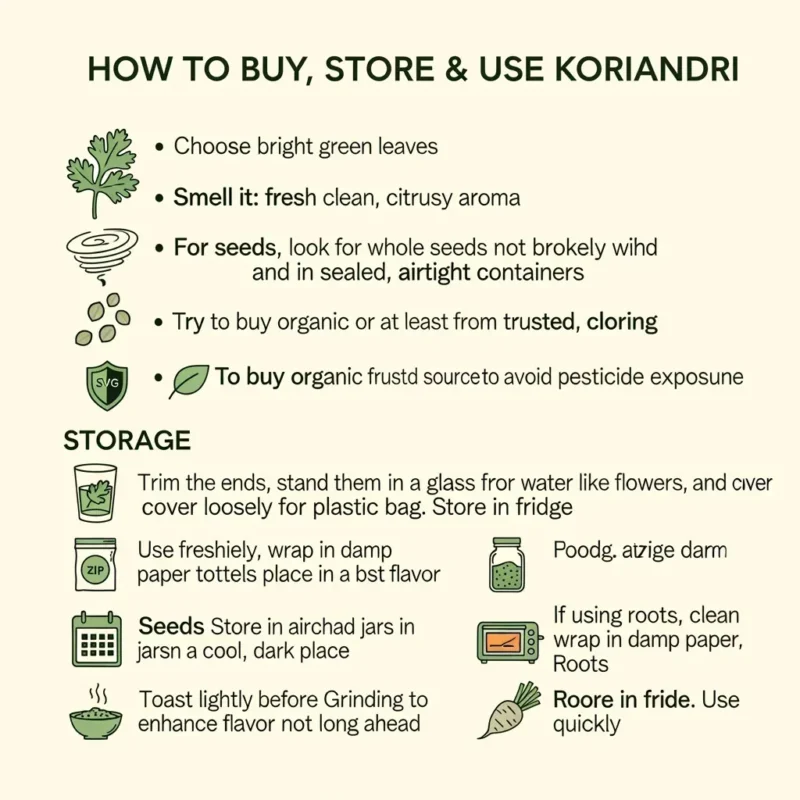Koriandri: Culinary Uses and Health Benefits

Have you ever sprinkled a handful of fresh green leaves over your curry or salsa and wondered what that mysterious herb really is and what magic it brings to your body, That herb is often koriandri (also called coriander or cilantro in many places), and it’s far more than just a pretty garnish. Explore the full story of Koriandri: Culinary Uses and Health Benefits from how to cook with it, to why your body might thank you for it, to tips for buying and storing it.
What Is Koriandri
Botanical background: Koriandri comes from the plant Coriandrum sativum, a member of the carrot family (Apiaceae). All parts of this plant leaves, seeds, and even roots are edible and used in different cuisines.
Leaves (cilantro / fresh coriander): The bright green leaves, often referred to as cilantro in the U.S have a fresh, citrusy flavor (though some people say they taste soapy due to genetic factors). In many regions, “koriandri” is simply the local name for those fresh leaves.
Seeds (dried coriander): Once the plant flowers and seeds mature, you get coriander seeds. These have a warm, earthy, slightly citrusy flavor when crushed or toasted.
Roots: Less common in many Western kitchens, coriander roots are prized in Thai cooking (e.g. Thai curry pastes) for their pungent, concentrated flavor.
Culinary Uses of Koriandri

Every chef worth their salt knows that koriandri is a culinary chameleon. Let’s explore its many roles in the kitchen.
Fresh leaves: finishing & garnish
In many cuisines, the fresh leaves are used raw or added at the end of cooking. Their aroma and delicate flavor would disappear under prolonged heat. You’ll often see them:
- Sprinkled on top of curries, soups, or stews
- Mixed into salads (e.g. tomato-cucumber salad with coriander)
- Chopped into chutneys, salsas, or green sauces
- Blended into dips (e.g. coriander-mint chutney)
- Stirred into cooked lentils or rice just before serving
This practice is familiar in Indian, Nepalese, Mexican, Southeast Asian, and Middle Eastern cuisines.
Seeds: spice, warm flavor, and aroma
Coriander seeds bring a different note earthy, warm, slightly citrusy when crushed or toasted. Uses include:
- Toasting whole seeds before grinding them into spice blends or powders
- Adding whole seeds in pickles, chutneys, or poaching liquids
- Using in marinades, rubs, and stews
- Infusing oils or vinegars
- Grinding into curry powders or spice blends (e.g. garam masala)
The difference is that seeds tolerate heat and release flavors slowly.
Roots: intense flavor for pastes
In Thai cooking (and some Southeast Asian cuisines), coriander roots are ground with other aromatics (garlic, galangal, etc.) to make curry pastes or sauces. Because roots are strong, they’re used in small amounts.
Creative uses: herbal waters, infusions, and more
Beyond the kitchen, you can:
- Make coriander seed tea (steep seeds in hot water)
- Use coriander water (soak seeds overnight, drink the water)
- Add fresh leaves to smoothies or green juices (sparingly)
- Use coriander stalks (finely chopped) in soups or stocks
- Infuse edible oils with coriander seeds
Nutritional Profile & Phytochemicals
Before diving into benefits, it helps to see what’s inside this modest herb.
Fresh leaves
In 100 g of fresh coriander leaves, you get mostly water, plus small amounts of carbohydrates and protein, with negligible fat. But more importantly, the leaves are rich in:
- Vitamins: A, C, K (which play roles in immunity, skin health, blood clotting)
- Minerals: Potassium, manganese, iron, magnesium
- Antioxidants / phytochemicals: quercetin, terpinene, tocopherols, linalool, and others that help fight oxidative stress
Seeds
Coriander seeds provide fiber, calcium, selenium, magnesium, and more concentrated phytochemicals (essential oils, phenolic compounds).
Because seeds are denser and less watery, their micronutrient content (per gram) tends to be higher.
Health Benefits of Koriandri
Many of the health claims around koriandri are promising but we need to balance enthusiasm with caution. Below is what research supports (and where evidence is still preliminary).
Blood sugar regulation
One of the most reported benefits: coriander (especially the seeds) may help lower blood sugar. Animal and lab studies show that coriander can promote enzyme activities that help clear sugar from blood.
However, human trials are limited. Also, if you already have low blood sugar or are on diabetic medication, using coriander could push glucose too low so it’s best to talk with a doctor.
Antioxidant, anti inflammatory & immune support
Koriandri contains compounds like quercetin, terpinene, and tocopherols, which help neutralize free radicals and reduce oxidative stress. These effects may help with inflammation, aging, and possibly even cancer prevention—but most evidence is from lab or animal studies.
It may also help in supporting immune defense via antimicrobial or antibacterial mechanisms. Some compounds (e.g. dodecenal) may inhibit bacteria such as Salmonella.
Heart health & cholesterol
There is evidence (mostly from animal studies) that coriander can help:
- Lower LDL (“bad”) cholesterol
- Increase HDL (“good”) cholesterol
- Lower blood pressure via mild diuretic effects
- Help the body remove excess sodium and water
Digestive health & appetite
Traditionally, coriander is used to relieve bloating, indigestion, flatulence, and stimulate appetite. Some small studies suggest coriander seed tea reduces abdominal discomfort.
Detoxification & heavy metal binding
Some claims say coriander binds to heavy metals (like lead, mercury) and helps excrete them in urine. This is sometimes cited in alternative medicine literature. But in rigorous scientific literature, evidence is very limited. Use that claim with caution.
Skin, hair, and other uses
Less studied in clinical trials, but common in traditional use:
- Applying coriander leaf paste or diluted extract to skin (for acne, rashes)
- Using coriander-infused oils or masks
- Massaging seeds or leaf extracts on scalp to promote hair health
Because topical application and dermatologic effects are less studied, use caution and do patch tests first.
How to Buy, Store & Use Koriandri

Buying tips
- Choose bright green leaves (no yellowing or limp stems).
- Smell it: fresh coriander has a clean, citrusy aroma.
- For seeds, look for whole seeds (not broken) and in sealed, airtight containers.
- Try to buy organic or at least from trusted sources to avoid pesticide exposure.
Storage
Leaves & stalks
- Trim the ends, stand them in a glass of water (like flowers), and cover loosely with a plastic bag. Store in fridge.
- Alternatively, wrap in damp paper towels and place in a zip bag.
- Use fresh leaves within a few days for best flavor.
Seeds
- Store in airtight jars in a cool, dark place.
- Toast lightly before grinding to enhance flavor (do this just before use, not long ahead).
Roots
- If using roots, clean them, wrap in damp paper, and store in fridge. Use quickly.
Here is a concise comparison of leaf vs seed vs root use and benefits:
| Part of Koriandri | Primary Culinary Use | Flavor Profile | Key Nutrients / Compounds | Best Time to Add in Cooking | Notes / Safety Considerations |
|---|---|---|---|---|---|
| Leaves | Salad garnish, chutney, salsa, finishing touch | Fresh, citrusy, herbaceous | Vitamins A, C, K, quercetin, antioxidants | At the end or raw | Some people perceive soapy taste (genetic) |
| Seeds | Spice blends, marinades, pickling, infusions | Warm, earthy, citrusy when toasted | Fiber, magnesium, essential oils | Early or during cooking | Can help lower blood sugar; watch with medications |
| Roots | Thai pastes, sauces | Concentrated, pungent | Aromatic oils | At paste preparation stage | Use sparingly; less common in many cuisines |
FAQs
Q1. Is “koriandri” the same as coriander or cilantro?
Yes “koriandri” is often a local name in some South Asian languages for the plant Coriandrum sativum. The fresh leaves are called cilantro in the U.S., while seeds are commonly known as coriander.
Q2. How much coriander should I eat daily to get benefits?
There’s no official recommended dose. In typical diets, people use it as an herb/spice. If you aim for therapeutic effects, it’s best to consult a healthcare provider because many studies use high doses or extracts (not ordinary culinary amounts).
Q3. Can coriander cure diabetes?
No coriander may help support healthy blood sugar levels, but it is not a substitute for medical treatment, drugs, or diet.
Q4. Why do some people hate the taste of coriander leaves?
Because of genetics: a variant in the gene OR6A2 makes certain people detect aldehydes in coriander as soapy or foul.
Q5. Can I use coriander in smoothies or juices?
Yes, in small amounts (a few leaves) to avoid overpowering flavor. Pairing with sweeter ingredients (banana, mango, pineapple) helps mask any strong notes.
Q6. Is coriander safe for pregnant or breastfeeding women?
Generally, culinary amounts are considered safe. But high doses or extracts may not be well studied. Always consult a medical professional in such cases.
Final Thought
Koriandri (i.e. coriander) is a humble herb with enormous versatility. It brings bright flavor, unique aroma, and a host of potential health benefits to your table. Yet it also carries caveats taste differences, possible drug interactions, and limited human studies. Use it in fresh salads, spice-rich curries, spice blends, or even experimental smoothies. Grow it in a pot, toast its seeds, or use its roots in bold pastes. But while you may enjoy its aroma and subtle medicinal support, don’t expect coriander alone to work miracles.
